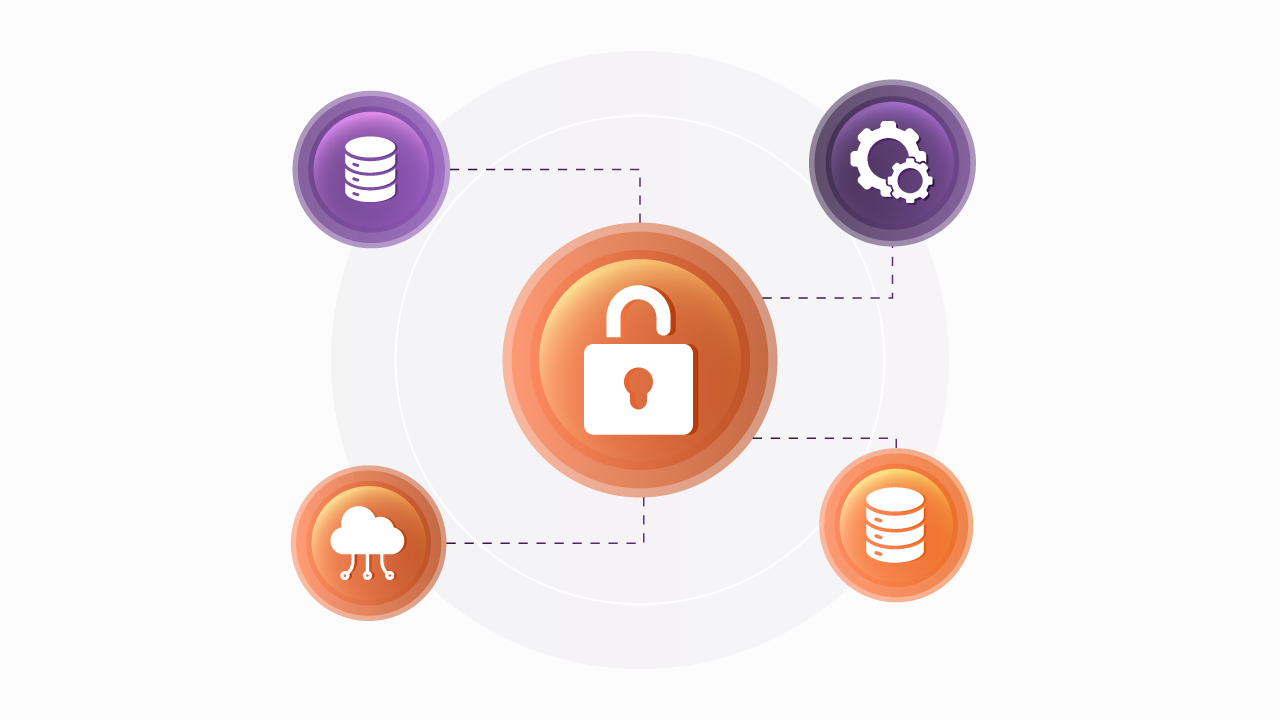What CIOs Need To Know About Microservices
What CIOs Need To Know About Microservices

Microservices have gained significant momentum over the last few years, and it's no surprise why, with industry giants like Amazon and Netflix as shining examples. But what essential insights should CIOs be aware of regarding Microservices?
These industry disruptors are prime examples of Microservices Architecture, and while they have proven highly effective, it's crucial to understand the core concepts.
Microservices Architecture is a specific design pattern for agile software development. It involves multiple autonomous services handling distinct business functions. The communication between these services is facilitated by a lightweight protocol, often utilizing API integration platforms such as RESTful APIs and gRPC for seamless integration. It's important to recognize the significance of these platforms in enabling effective API management within the Microservices Architecture.
The Microservices Architecture offers a crucial advantage by segmenting services and efficiently delivering value to end-users. This leads to more minor, specialized services, making software maintenance easier and enhancing flexibility, particularly when compared to monolithic systems.
Before delving into Microservices Architecture, it's essential to understand its key components, including the formulation of a robust API strategy.
Off the Shelf
Embarking on the Microservices journey isn't a one-size-fits-all endeavor. It's akin to custom tailoring, understanding your organization's unique needs and challenges. Here's a simplified guide to get started:
- Assessment: Examine your current software setup and business requirements. Identify pain points and explore how Microservices can address them.
- Legacy Systems: If dealing with old-school systems, plan their integration into the Microservices world, which may require upgrades and legacy modernization.
- Team Training: Ensure your teams are well-versed in modern software development, containerization, and orchestration for a powerful API strategy.
- Clear Goals: Define your objectives with Microservices, whether it's enhancing scaling abilities, agility, or speeding up time to market.
- Pilot Projects: Test Microservices in specific business areas through pilot projects or prototypes before full implementation.
- Culture Shift: Prepare for a cultural change, aiding your team's adaptation to new ways of working through change management and communication plans.
- Building vs. Third-Party Solutions: Decide whether to build Microservices from scratch or leverage third-party solutions based on expertise, resources, and budget.
- Compliance: Ensure Microservices adhere to industry regulations, incorporating proper security and privacy practices to maintain regulatory compliance.
- Scalability: Develop a growth plan to effectively handle increased work and users, leveraging Microservices' scalability.
- Monitoring and Maintenance: Keep Microservices healthy through continuous API monitoring, addressing issues, updates, patches, and troubleshooting.
- Budget Management: Wisely calculate the costs and returns of adopting Microservices, akin to managing finances for a significant venture.
Remember, Microservices represent an ongoing journey, necessitating continuous reassessment and customization for sustained benefits.
On-Premises or Cloud Deployment? That is the question!
When it's time to set up your Microservices, you have two main choices: On-Premise or Cloud deployment. It's like deciding between two different types of transportation: Cloud is like a rocket, super fast and able to go anywhere in the world. It's cost-effective, has cool tools, and can handle a lot of work.
On the other hand, On-Premises deployment is like having your own car. You control everything about it – the hardware, the data, and how safe it is. This is good for industries that have strict rules about privacy and already have a lot of their own equipment.
But here's the exciting part – some people choose both! They mix Cloud and On-Premises deployments to make a hybrid solution. It's like having the benefits of both options. This gives you flexibility, saves money, and gives you more control.
Deciding between Cloud and On-Premises deployment is a significant choice. It depends on what your organization needs, what resources you have, and where you want to go in the future.
Take your time, think about your choices, and figure out how your decision will affect your Microservices. This includes how well they work, how much they can grow, and if they can reach the goals of your business. And remember to use the right tools, like the notable API lifecycle management tools, to make sure everything runs smoothly!
DevOps!
If you want to speed up the game, there's something important you should know about called DevOps. It's not just a cool word; it's like a secret tool that helps you do amazing things with Microservices through efficient DevOps practices. Let me explain it to you:
DevOps revolves around automation, specifically Continuous Integration and Continuous Deployment (CI/CD). These pipelines automate the steps of constructing, testing, and deploying code. It operates like a smoothly running machine, allowing developers to make changes, have them tested, and move them to the production stage with minimal manual intervention. This accelerates development and ensures swift delivery of Microservices.
Collaboration is the name of the game. DevOps encourages developers and operations teams to team up. They work together in partner ecosystems, collaborating to deliver and maintain services with the efficiency and reliability of well-implemented DevOps practices. This teamwork breaks down barriers and ensures your Microservices operate at their best.
Consider automation. DevOps is focused on eliminating manual tasks. From setting up infrastructure to testing and deployment, everything is automated. Fewer manual tasks lead to increased efficiency, reduced chances of errors, and smooth operations.
Also, keep your eyes on the prize with API monitoring and feedback. DevOps encourages you to keep an eagle eye on your Microservices in action. You've got tools and developer experience best practices to check on performance, security, and user experience. It's like having a crystal ball to guide improvements.
And don't forget the culture shift. DevOps isn't just about fancy tools; it's a mindset change. It's all about getting better every day, working together, and taking ownership. Your teams become the boss of their services.
And speaking of security, it's serious business in DevOps. You've got security practices baked into the whole software development process. Ensuring API security governance is like having guards at every gate to ensure your Microservices are robust and secure.
What about when things go south? DevOps has got your back with resilience. It's all about being ready for the worst, with backup plans, fail-safes, and disaster recovery strategies. Even when things get tricky, your services keep on shining.
Lastly, scalability. DevOps is your go-to for managing the ups and downs. It's like having a magical wand that can automatically adjust to heavy workloads, balance the load, and ensure everyone has the right resources.
Incorporating DevOps into your Microservices game plan isn't a choice; it's a must for success. It's your ticket to fast responses, reliable services, and a culture of constant improvement. Embrace DevOps, and you'll be riding the Microservices wave like a pro, with all the flexibility that the more agile architecture affords.
New Organization: New organization
Adopting a Microservices Architecture not only transforms your technical infrastructure but also has a profound impact on your organization's structure and culture.
It is like giving your organization a makeover – it's not just about tech. It's about a new way of working and thinking. Let's explore how this digital transformation shakes things up:
- Specialization: With Microservices, teams become finely tuned engines. They specialize in specific tasks, which makes them super-efficient problem-solvers. It's like having a team of experts in different areas.
- Speedy Delivery: Specialized teams mean faster results. These teams are like racers with their eyes on the prize, focused on delivering new features and services with lightning speed.
- Empowered Teams: Teams in the Microservices world have more control and responsibility. This means they can make quick decisions and fix issues faster, improving service quality.
- Squads and Missions: Some organizations implement methodologies like "Squads," inspired by Spotify's Engineering Culture. Each squad comprises individuals with diverse technical skills, focusing on a specific "Mission." These missions often correspond to specific services.
The goal is to ensure that the people responsible for developing a service are also the experts capable of solving any issues that may arise. It's all about having the right experts on the job.
You can learn more about Spotify’s development team by watching Jamie Kirkpatrick’s presentation from the 2015 APIX event.
- Communication Magic: Microservices promote teamwork by breaking down tasks into smaller, focused services. This streamlined approach makes communication between teams easier, serving as the secret sauce for delivering value quickly.
- Mindset Shift: Transitioning to Microservices involves a shift in mindset. Teams move from traditional methods to adopting decentralization, autonomy, and the advantages of microservices.
- Cross-Training: Teams occasionally take on varied roles. This helps them understand and collaborate better on each other's work.
- Agile and Adaptive: With Microservices, you're agile, able to adapt swiftly to market changes. Quick responses to customer feedback and evolving business needs are at your fingertips.
- Continuously Improving: Microservices foster continuous improvement, creating a culture of constant innovation and agility.
So, remember, moving to Microservices with an API management platform isn't just a tech upgrade – it's a complete shift in how your organization operates. With specialized teams, efficient communication, and a commitment to improvement, you're on your way to mastering the Microservices game and staying ahead in the ever-changing digital world.
Effective Management of Microservices
One of the most effective ways to support Microservices Architecture is using an API management platform for North-South communications combined with a Service Mesh tool for East-West communications.
API management platforms, such as Apigee and AWS API Gateway, play a crucial role in Microservices architecture. They provide centralized control over APIs, allowing for authentication, traffic management, and monitoring. CIOs should choose a platform that suits their organization's needs and integrates seamlessly with their Microservices.
On the other hand, Service Mesh tools like Istio and Linkerd facilitate communication between Microservices components. They offer features like load balancing, security, and observability. CIOs should implement a Service Mesh Architecture that aligns with their Microservices infrastructure to ensure seamless, secure, and efficient communication between services.
This combination ensures smooth integration among your microservices, web APIs, and backend, offering security against potential attacks and performance issues. It also facilitates the generation of crucial metrics and indicators for your APIs, covering both their health and business impact.
Takeaways
In essence, embracing Microservices entails more than a digital transformation—it's a profound cultural shift. DevOps practices play a crucial role by automating processes and instilling a mindset of continuous improvement. Specialized teams, agile methods, and smart integration of API management and Service Mesh tools guarantee smooth communication and security, positioning organizations for success in the digital era. Whether opting for on-premise or cloud deployment, thoughtful planning and adaptability are key, with each decision contributing to mastering the Microservices game for long-term success.
If you need expert guidance on Microservices, please complete the form below.
Begin your API journey with Sensedia
Hop on our kombi bus and let us guide you on an exciting journey to unleash the full power of APIs and modern integrations.
Related content
Check out the content produced by our team.
Embrace an architecture that is agile, scalable, and integrated
Accelerate the delivery of your digital initiatives through less complex and more efficient APIs, microservices, and Integrations that drive your business forward.





.svg)






.png)
